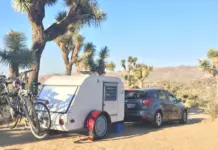Set in the distant future amidst a feudal interstellar society in which various noble houses control planetary fiefs, Dune tells the story of young Paul Atreides, whose family accepts the stewardship of the planet Arrakis. While the planet is an inhospitable and sparsely populated desert wasteland, it is the only source of melange, or “the spice,” a drug that extends life and enhances mental abilities. Melange is also necessary for space navigation, which requires a kind of multidimensional awareness and foresight that only the drug provides. As melange can only be produced on Arrakis, control of the planet is thus a coveted and dangerous undertaking. The story explores the multi-layered interactions of politics, religion, ecology, technology, and human emotion, as the factions of the empire confront each other in a struggle for the control of Arrakis and its spice.
…
Dune has been called the “first planetary ecology novel on a grand scale”. After the publication of Silent Spring by Rachel Carson in 1962, science fiction writers began treating the subject of ecological change and its consequences. Dune responded in 1965 with its complex descriptions of Arrakis life, from giant sandworms (for whom water is deadly) to smaller, mouse-like life forms adapted to live with limited water. Dune was followed in its creation of complex and unique ecologies by other science fiction books such as A Door into Ocean (1986) and Red Mars (1992). Environmentalists have pointed out that Dune‘s popularity as a novel depicting a planet as a complex—almost living—thing, in combination with the first images of Earth from space being published in the same time period, strongly influenced environmental movements such as the establishment of the international Earth Day.
In Dune, Prince Paul Atreides is cast into the desert where he encounters the native peoples of the planet living in exile in a land only they know how to live in. I am inspired by the story’s praise of native ways of doing, surviving, and making. The more I dive into looking at sustainable food production, the more I see a trend of a need for us to move backward in our techniques to become more in touch with natural biological cycles in order to move forward.



